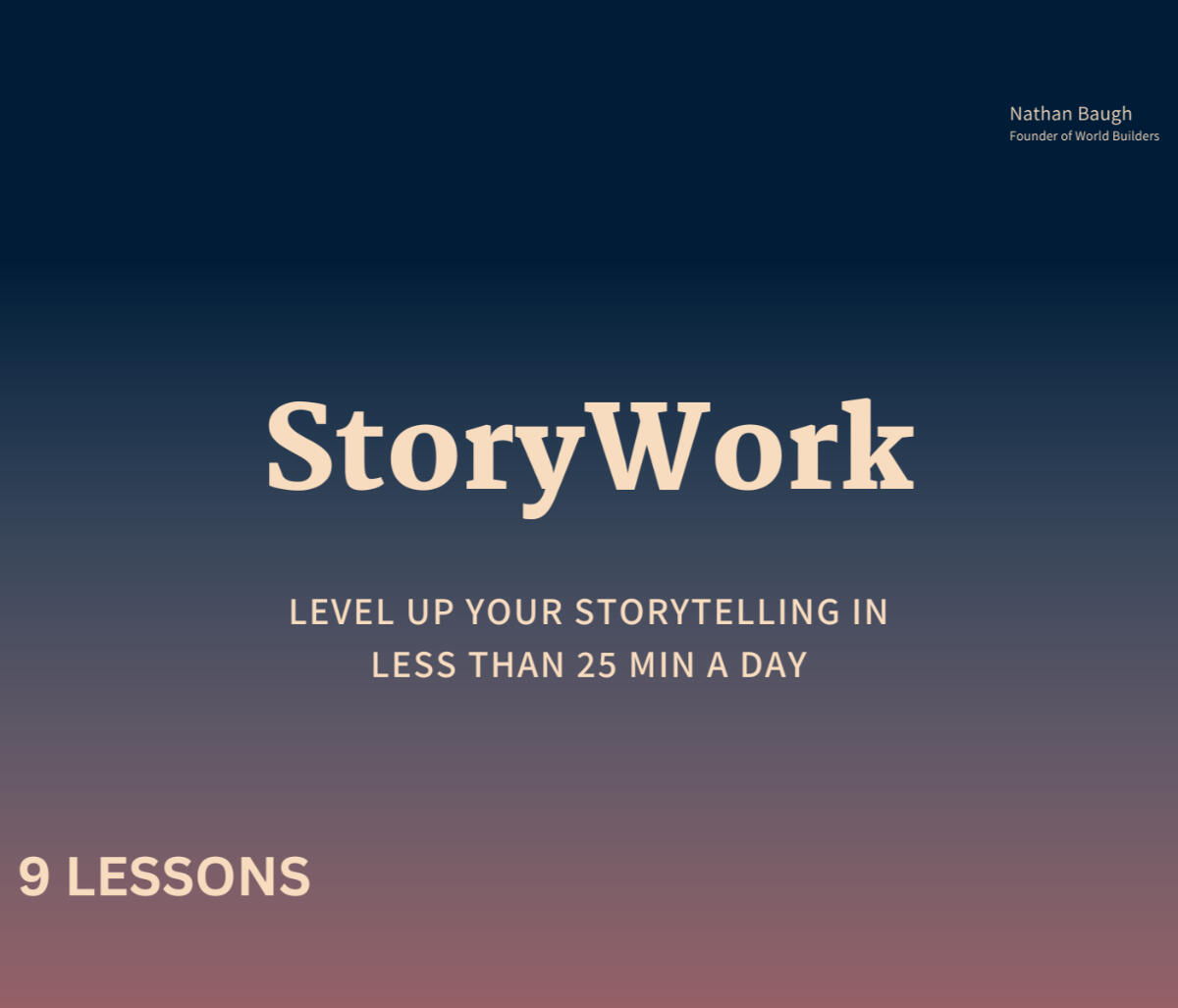- World Builders
- Posts
- Numbers Game
Numbers Game
5 steps to enhance your stories with data
Hello fellow World Builders! If you want to join 32,279 others exploring the world of storytelling, subscribe below:
You can peruse past articles here.

Solopreneurship 101:
When pitching your product, turn data into stories.
Stories hook.
Data supports.Together, they work magic.
— Justin Welsh (@thejustinwelsh)
5:02 PM • Jun 10, 2022
I love the simplicity of “Stories hook, data supports.” But it’s difficult to put into practice.
My engineering + consulting background means I love numbers and look for systems or processes everywhere. But my author + creator side makes me see the world through stories.
Today, I'll show you the step-by-step process I follow to use data in stories.
5 steps to enhance your stories with data
1. Identify the end goal
The first tip for using data effectively is to not think about the data. The data is there to augment the narrative, not the other way around.
Instead, you need to figure out the desired outcome from your story. A few examples:
Inspire your team (motivated)
Make a friend laugh
Get a check from investors
The goal should have an action and, ideally, an emotion tied to it.
2. Structure your story
The narrative structure is still the most important piece when using data in storytelling. Your story is not a series of remarkable events with some numbers scattered throughout. It’s an emotion-filled ride from point A to point B, ideally with a core transformation.
Here are a few resources to help you nail your structure.
For brand stories:
For personal stories:
Pixar’s 22 Rules for Storytelling
3. Gather supporting data
Boom. You’ve got your end goal and your structure laid out. Now it’s time to find potential data to use. Don’t overcomplicate this. Research until you have a massive list of data points.
Depending on the type of data you’re looking for, the sources will of course vary – make sure to give credit and ensure the source is credible.
The key: don’t try to pick what data to use yet. Just aggregate as much data as possible.
4. Group the data thematically
I generally find there are 3 types of data that give stories the biggest boost:
Counter-intuitive – how does that make sense?
Comparison – these numbers next to each other create a curiosity gap
Wow factor – jeez, I had no idea!
This is one way to group the data. You can also do so by emotion elicited, subject, or anything else that makes sense for your story.
The key: Grouping helps you avoid repeating the same ideas over and over. You want to use data from each of your themes to support the overall narrative.
5. Cut the data until you're left with the strongest points
The more numbers readers see, the more their eyes start to glaze over. You want to avoid that.
But how?
Take each grouping and give each data point within a ranking on how powerfully it enhances the emotion your narrative is based on. Then, chop that list of 100 data points down to 10. Or 10 down to 1.
Keep going until you’re left with the data that best enhances your narrative and associated emotion.
Shaan Puri shared this list on Twitter. It nails most every emotion you may try to get your audience to feel:

People make decisions based on emotion but justify with logic.
Then, you need to get those data points into your story. Be strategic here – don’t lump them all into one place. Instead, spread them throughout your story for max effect.
In summary: Data is an enhancer to your narrative, not the narrative itself. Build your narrative and then incorporate the best data to fit.
Two examples:
Liquid Death on plastic recycling as a myth (video + webpage)
Kahani's pitch deck (Twitter)
– Nathan
PS: If you’ve thought about starting a newsletter, Jack Raines and I created a course to give you the tactics to build, grow, and monetize yours. Check it out here.

A message from... Me!
The interest in this tweet blew me away...
One way to become a better storyteller:
Take your two favorite authors. I recommend one non-fiction and one fiction.
Copy, word for word, their best work. Do it by hand.
I chose Paul Kalanithi and Neil Gaiman.
It’s the single exercise that improved my writing the most.
— Nathan Baugh 🗺️ (@nathanbaugh27)
3:06 PM • Jan 5, 2023
In my experience, there are two ways to get good at storytelling:
Study the greats (what this newsletter is for)
Practice, practice, practice
I do a lot of practice through StoryWork.
And so many of you liked, commented, and sent me DMs about the practice I decided to turn it into a guided course for you.
Check it out:

Storyteller's Finds
🗞️ Newsletter: Sieva Kozinsky writes The Business Academy 1x per week, hitting on either a business insight or investing opportunity. One of the few I have a 100% open rate for.
🎙️ Podcast: The Danny Miranda podcast episode with Neville Medhora hits on everything from copywriting to happiness to pioneering the early days of blogging.
📙 Book: The Kite Runner is one of the most well told stories I've ever read. I gave the book to my dad this week, so thought I'd share here, too.
📹 Video: Brandon Sanderson, arguably the most popular fantasy author in the world, shares his five tips for writing your first novel:
